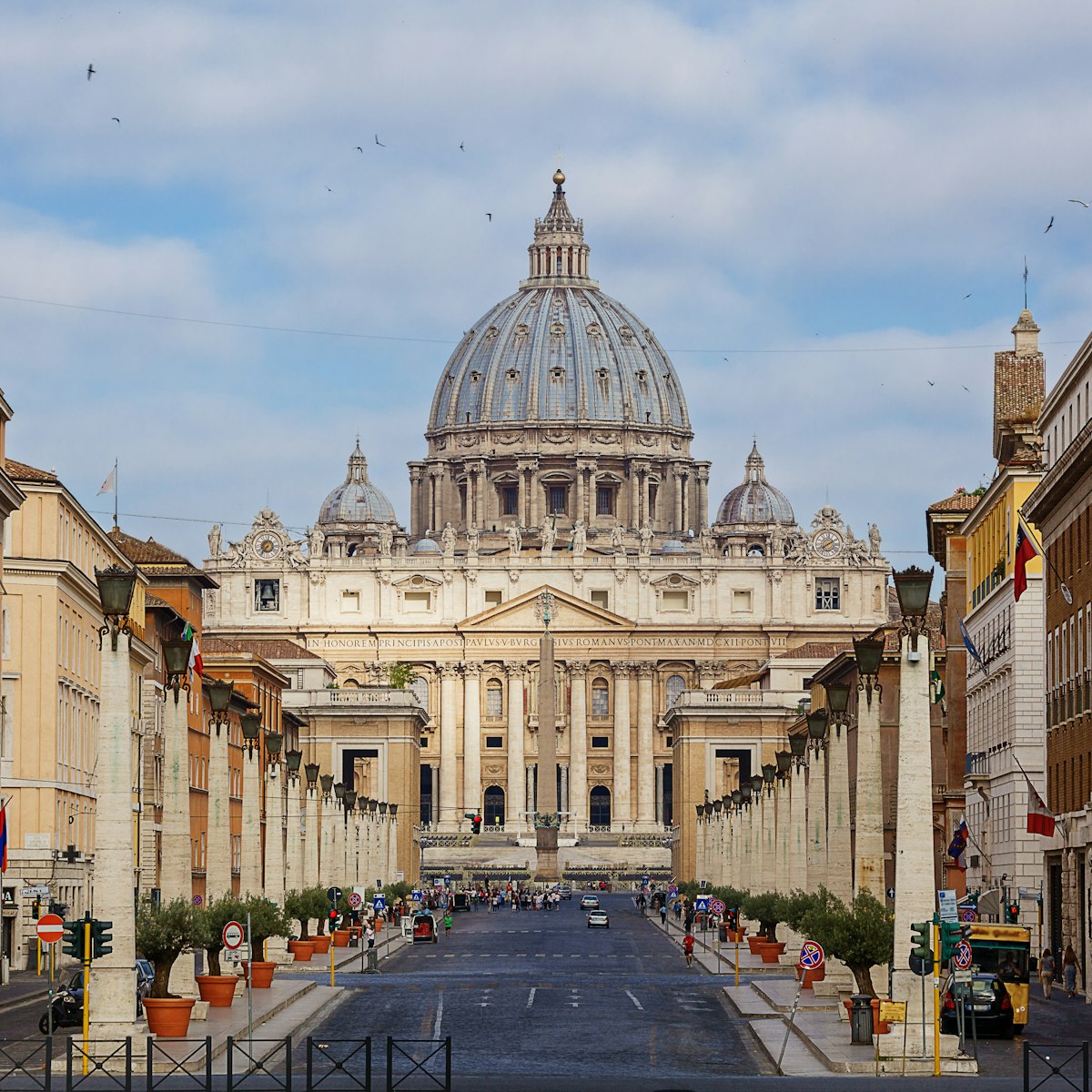Although a bit of a hike, it’s well worth searching out this intriguing medieval church complex. Set over the catacombs where St Agnes was buried, it comprises the Basilica di Sant'Agnese Fuori le Mura, home to a stunning Byzantine mosaic of the saint, and the Mausoleo di Santa Costanza, a circular 4th-century mausoleum decorated by some of Christendom's oldest mosaics.
The original basilica, remains of which can be seen in a field adjacent to the current complex, was built in the 4th century for Costanza, daughter of the emperor Costantino. It was subsequently abandoned in the 7th century and replaced by the current basilica, which has itself been much modified over the centuries. Its star attraction, and one of the few original features, is its golden apse mosaic. This is one of the best examples of Byzantine art in Rome and has survived intact. It shows St Agnes, flanked by Popes Honorius and Symmachus, standing over the signs of her martyrdom – a sword and a flame. According to tradition, the 13-year-old Agnes was sentenced to be burnt at the stake, but when the flames failed to kill her she was beheaded on Piazza Navona and buried beneath this church.
Up from the main basilica is the Mausoleo di Santa Costanza. This squat circular building has a dome supported by 12 pairs of granite columns and a vaulted ambulatory decorated with beautiful 4th-century mosaics. Bring a €0.50 piece to turn on its lights.








